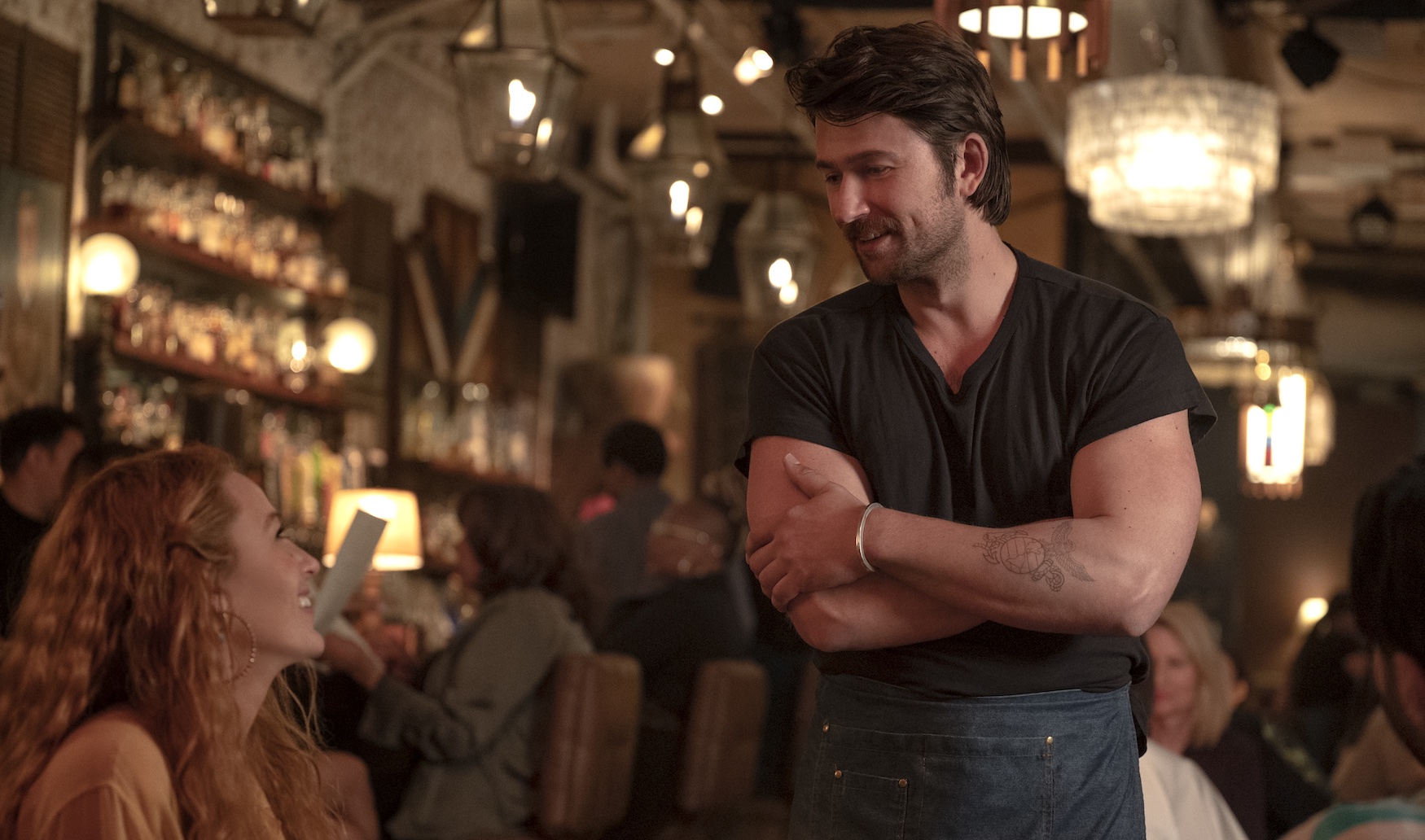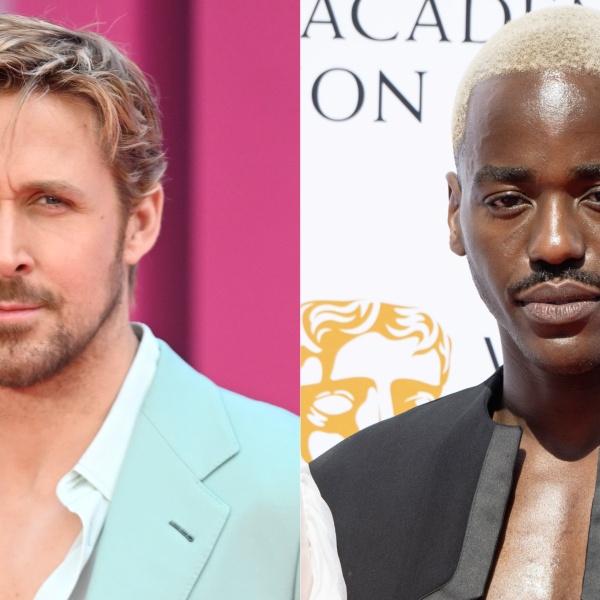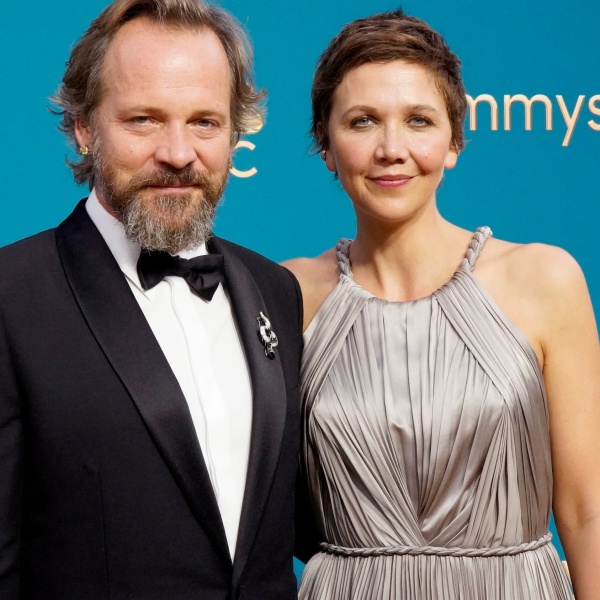[Editor’s note: The following article discusses plot points for both the movie and the book of “It Ends with Us,” including the ending.]
If you don’t know the name Colleen Hoover, you would probably still recognize her books. Floral colors complete with big block lettering and pretty designs dominate Targets and bookstores, where her bestsellers (8.6 million copies in 2022 alone) have found a massive fan base through word of mouth as well as newer phenomenons like BookTok recommendations.
Most of Hoover’s novels were self-published YA and romance tales before she broke big with 2016’s “It Ends with Us,” a movie adaptation of which is in theaters this weekend, starring Blake Lively. You’d be forgiven for thinking it was a typical romantic triangle drama, but the real plot is much darker: “It Ends with Us” follows Lily Blossom Bloom (…yes) a flower shop owner who thinks she’s found the charming love of her life, Ryle (Justin Baldoni, who also directs), only to discover her world turned upside down when he starts being violent with her. This causes her to examine her own history with a high school love and remembering her parents’ own violent relationship as well.
In an author’s note at the end of the book, Hoover shares the story was inspired by her parents’ own volatile marriage. “When I decided I wanted to write this story, I first asked my mother for permission. I told her I wanted to write it for women like her. I also wanted to write it for all the people who didn’t quite understand women like her. I was one of those people. … I wanted to write something realistic to the situation my mother was in. … I wanted to explore the love between Lily and Ryle so that I would feel what my mother felt when she had to make the decision to leave my father — a man she loved with all her heart.”
Incredibly admirable intentions, and while the book and film won’t be for everyone (it’s a simplistic story, and the film is currently rocking a 59 percent on Rotten Tomatoes) it certainly is sure to please fans of the novel.
Speaking of that source material…
Changes from the Book
The movie, written by “Daddio” filmmaker Christy Hall, is a very faithful retelling of Hoover’s original tale, with many scenes — like Lily and Ryle’s near-perfect rooftop first meeting — making the way to the big screen nearly as a line for line adaptation. The biggest change for book fans is a particular framing device: In the novel, the flashbacks to high school-aged Lily and her neighbor/boyfriend Atlas are delivered via long letters to Ellen DeGeneres. (It doesn’t work in the novel and Hall and producers made the right call scrapping this.)
In the book, it’s explained that Lily’s young life isn’t good, and her dream is that a celebrity that celebrates kindness would be able to assist her in making it better. It’s a helpful fantasy for her to get through her painful day-to-day existence, and she never actually sends the journal letters to DeGeneres. In the film, Atlas and Lily watch “Ellen” at one point, but all other references to the comedian, including an ending scene where Atlas tells Lily to “just keep swimming” (a la “Finding Nemo”) are all removed.
Another change is one in perspective. In the book, each time Ryle physically assaults her, Lily is very clear that what he is doing is abusive. After the first time, she says she’s willing to forgive him, but if he ever does it again, she’ll walk. In the film, it’s less clear if Lily is aware that the abuse happening to her is, in fact, abuse and not accidents or mistakes or simple mishaps. That was probably a decision to keep the audience off-balance alongside Lily, and a way to more clearly experience the ground-shifting nightmare of coming to terms with the fact that someone you consider the love of your life is hurting you.
A book change that deserves a round of applause? Jenny Slate merits a special shout out for the humor she brings to the role of Allysa, Lily’s co-worker/friend as well as Ryle’s sister. The part isn’t super developed in the novel, but Slate brings a kicky charm to each of her limited scenes, and also gets to deliver, for my money, the most affecting moment in the film: When she tells Lily that as a sister, she’d love her to forgive Ryle, but as her best friend, she’ll never speak to her again if she does.

Sequel Plans?
Hoover wrote a sequel to “It Ends with Us,” “It Starts with Us,” in 2022, so the source material is certainly there.
“It Starts with Us” picks up with the epilogue in the first book, in which Atlas and Lily run into each other at the park, with Lily’s toddler-aged daughter in tow. Deciding that now she is finally ready for an adult relationship, the two kiss and decide to give things a real shot. The sequel finds them trying to make it work, with an angry Ryle still in the picture.
The sequel is also partially told from Atlas’ point of view, so there are plenty of new flashbacks as well. While there has been no official word, it seems likely that if the movie makes money, “It Starts with Us” as well as other Hoover stories — like romantic thriller “Verity,” which is in development at Amazon MGM — will get big screen consideration, and soon.
A Sony release, “It Ends with Us” is in theaters now.




